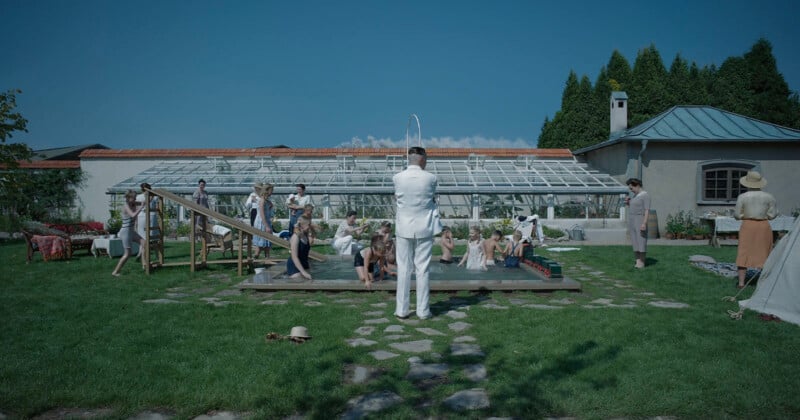
Oscar-winning movies are associated with huge crews and intense sets but that is definitely not the case with The Zone of Interest.
The film that won Best International Feature Film and Best Sound as well as being nominated for Best Picture, Best Director, and Best Adapted Screenplay did away with all the usual trappings of a movie set in a bid to recreate what it was really like for a Nazi concentration camp commandant and his family during the Holocaust.
The movie’s style is more akin to a reality TV show like Big Brother with multiple hidden cameras in the house which allows the actors to roam freely and play out scenes naturally. Almost every shot in the movie is a static, wide shot with a deep depth of field as the actors worked with no marks and little guidance.
But it meant that when the moviemakers wanted multiple angles of a scene they had to come up with clever ways of hiding the cameras which they would secret in some of the props. When that was not possible, they would leave the camera in the shot and then edit by using a clean version of the same scene.
“We didn’t want to make a movie set,” explains cinematographer Łukasz Żal. “There was no lighting, there was no film gear on the set. Only light cameras.”
Gary Kotzé from the In Depth Cine YouTube channel explains that part of the creative rationale for presenting the story this way was to neither demonize nor glamorize characters and their actions through normal filmmaking language but rather present them with a detached objectivity.
“Zone of Interest is not a story in the sense of a normal film,” says director Jonathan Glazer. “It’s about a man who has a lovely life with his family, he’s very good at his job, they live in the country, lovely house with a lovely garden, and he also happens to be the commandant of Auschwitz.”
Picking the Right Camera Setup
The Zone of Interest was shot in a house on location near the old Auschwitz concentration camp in Poland where Glazer and Żal embedded 10 cameras that were constantly recording.
The filmmakers opted for a Sony Venice with Leitz Cine M 0.8 lenses for a couple of reasons: the Sony Venice operates a Rialto system where the sensor and lens can be separated from the camera body making it more discreet.
The crew situated themselves downstairs in the basement of the house so the cameras needed a live feed where they could monitor what was happening upstairs while the rest of the crew were in a container nearby. They did this by hardwiring the cameras into monitors.
Of course, shooting exclusively in natural light requires a camera with excellent dynamic range which is something the Sony Venice comes with in spades thanks to its 15 stops of dynamic range.
